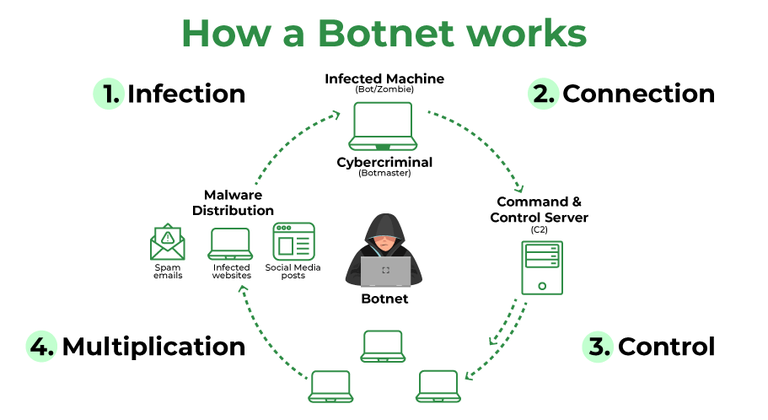Cyber threats come in many different forms these days. Ransomware, phishing, supply chain assaults, endpoint attacks, and other tactics are frequently used by cybercriminals to target organizations. Additionally, businesses are under more strain than ever before due to the constantly expanding list of cybersecurity threats; network security is always being compromised and cyberattacks are getting more prevalent. IoT has evolved over the past few years, from a theoretical idea to a top concern for businesses all over the world. IoT devices have many, broad commercial benefits.
What Are IoT Botnet Attacks?
A botnet attack is a type of large-scale cyberattack in which a group of malware-infected computers is controlled remotely by hackers. In essence, the infected computers turn into “zombie bots” that the botnet controller controls. Cybercriminals employ botnets to automate large attacks like virus distribution, data theft, server crashing (DDoS attacks), and crypto mining. The phrase “botnet” is derived from the words “robot” and “network.”
At its core, an IoT botnet attack works like this:
- Attackers take advantage of an issue to introduce malware to the device’s users.
- Malware infects devices for hackers to gain control over them.
- The attackers use the compromised devices to launch attacks.
Your device will typically exhibit performance concerns, such as slow speeds or persistent pop-ups and spam, if a botnet attack has compromised it.
How to avoid Botnet Attacks?
Here are some tips:
- Change Default Credentials: Always change default usernames and passwords on IoT devices to strong, unique credentials. Avoid using common or easily guessable passwords.
- Keep Software Updated: Regularly update the firmware and software of your IoT devices to patch vulnerabilities. Enable automatic updates whenever possible to ensure devices are protected against known exploits.
- Change Default Credentials: Always change default usernames and passwords on IoT devices to strong, unique credentials. Avoid using common or easily guessable passwords.
- Keep Software Updated: Regularly update the firmware and software of your IoT devices to patch vulnerabilities. Enable automatic updates whenever possible to ensure devices are protected against known exploits.
We cannot neglect cybersecurity when designing IoT devices for now and in the future. Botnets will keep coming, and hackers will sophisticate their techniques, so the time to act is now. By following the given tips and staying vigilant, you can significantly reduce the risk of IoT botnet infections and protect your devices and network from compromise.

